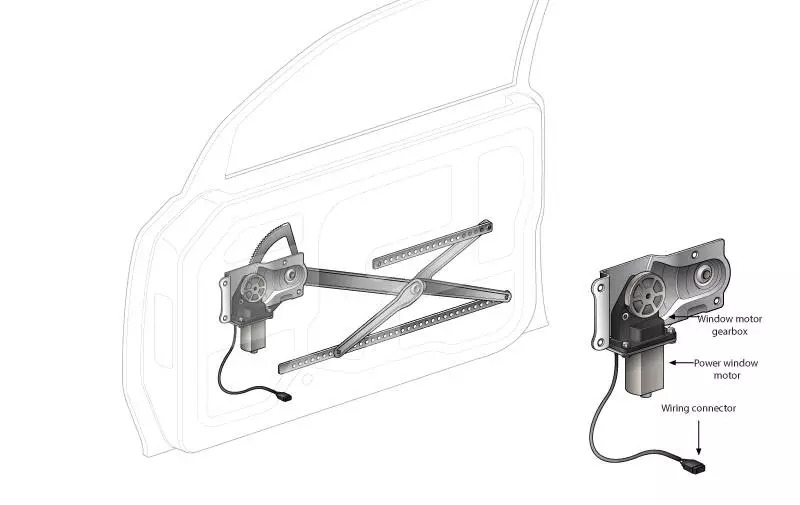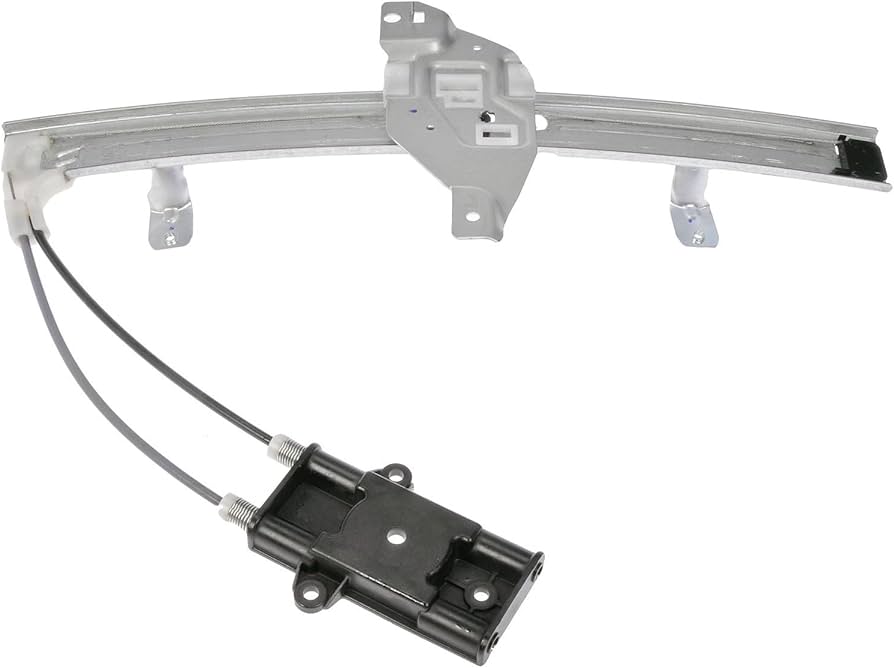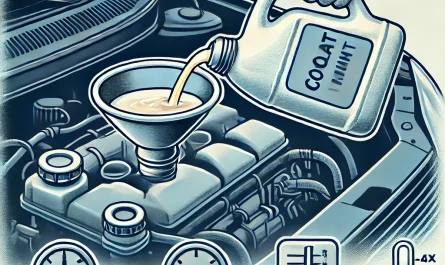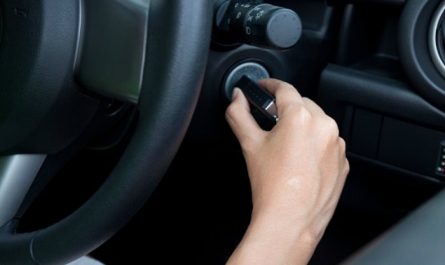Introduction to Window Regulators
Window regulator is an essential component in vehicles, allowing you to raise or lower the windows as needed. Whether operated manually or powered by electricity, window regulators play a crucial role in the functionality of your vehicle’s windows.

What is a Window Regulator?
A window regulator is a mechanical device located inside a vehicle’s door, responsible for controlling the up and down movement of the window glass. It converts the rotary motion of a crank handle or electric motor into the linear motion needed to move the window.
Importance of Window Regulators in Vehicles
Window regulators are vital for both safety and comfort. They allow you to adjust your windows to ventilate the car, communicate with others outside, or quickly close your windows in inclement weather. A malfunctioning window regulator can be more than just an inconvenience—it can compromise your vehicle’s security and functionality.
Types of Window Regulators
Understanding the different types of window regulators can help you identify which one is in your vehicle and how to maintain or replace it if necessary.
Manual Window Regulators
Manual window regulators are operated by turning a crank handle, converting manual force into the motion needed to raise or lower the window. These are typically found in older or budget-friendly vehicles.
Power Window Regulators
Power window regulator use an electric motor to control the window’s movement, activated by a switch on the door panel. They are more common in modern vehicles and offer greater convenience.

Cable-Type Window Regulator
Cable-type regulators use a series of cables and pulleys to move the window. They are lightweight and efficient but can wear out or break over time due to tension on the cables.
Scissor-Type Window Regulator
Scissor-type regulators, also known as X-type regulators, use a set of arms that form an “X” to lift or lower the window. They are durable but tend to be heavier and more complex.
Single Arm and Dual Arm Window Regulator
Single-arm regulators have one arm that moves the window, while dual-arm regulators provide additional stability with two arms. Dual-arm versions are generally used in larger or heavier windows.
How Window Regulators Work
The operation of window regulator varies depending on whether they are manual or powered. Here’s a closer look at how each type functions.
Mechanical Operation of Manual Regulators
Manual regulator use a crank handle attached to a gear system. Turning the crank moves gears and linkages that raise or lower the window. This system is simple, reliable, and less prone to electrical failures.
Electrical Operation of Power Regulator
Power regulators consist of an electric motor, a set of gears, and a series of cables. When the window switch is activated, the motor drives the gears, which, in turn, pull the cables to move the window up or down.
Key Components of a Window Regulator
Window regulators consist of several crucial components that work together to control the window’s movement.
Motor Assembly (for Power Regulators)
The motor assembly powers the window’s movement in power regulator. It is the most critical component in electrically powered systems, and any malfunction can cause the entire regulator to fail.
Gear Mechanism
The gear mechanism converts the rotational force from the handle or motor into linear movement. This system allows precise control over the window’s positioning.
Cable and Pulley System
In cable-type regulators, cables and pulleys work together to guide the window’s movement. These components are essential for smooth operation but are susceptible to wear and breakage.
Mounting Points
Mounting points secure the regulator to the door frame, ensuring stability and proper alignment. Loose or damaged mounting points can lead to misaligned windows and operational difficulties.
Common Issues with Window Regulators
Like any mechanical system, window regulator can experience problems. Recognizing these issues early can prevent further damage.
Stuck or Slow-Moving Windows
This problem often occurs due to worn gears, broken cables, or motor issues. A slow-moving window might indicate a lack of lubrication or mechanical resistance within the system.
Unusual Noises When Operating the Window
Grinding, clicking, or squeaking noises can indicate a failing regulator. These sounds often result from worn gears, loose components, or debris within the mechanism.
Window Not Staying in Position
A window that won’t stay up or slips down can be caused by a faulty regulator, specifically issues with the gears or mounting points.
Causes of Window Regulator Failures
Window regulator failures can result from several factors, each contributing to wear and damage over time.
Wear and Tear
Constant use naturally leads to wear, especially in manual regulators where physical force is applied repeatedly.
Water Damage
Exposure to moisture can corrode metal components, particularly in power regulators where water can damage electrical connections.
Electrical Malfunctions
In power regulators, electrical problems such as faulty wiring, blown fuses, or motor failures can disrupt operation.
Accidental Damage
Physical impacts, such as slamming doors or attempts to force a stuck window, can break or misalign regulator components.
Diagnosing Window Regulator Problems
Proper diagnosis is crucial for effective repair or replacement. Here’s how to identify common issues with window regulator.
Visual Inspection
Inspect the window tracks, cables, and gear systems for visible signs of wear, damage, or obstructions.
Listening for Unusual Sounds
Operate the window while listening for grinding, clicking, or straining noises, which can indicate internal issues.
Checking Window Movement and Response
Test the window’s responsiveness to the switch or crank. Slow or unresponsive windows may point to motor or mechanical failures.
Repairing a Window Regulator
Minor issues with window regulators can often be repaired with the right tools and techniques.
Tools Needed for Repair
Common tools include screwdrivers, pliers, socket wrenches, and lubricants. For power regulators, a multimeter may be necessary to test electrical components.
Step-by-Step Guide to Repair
- Remove the Door Panel: Start by carefully removing the door panel to access the regulator.
- Inspect the Regulator: Identify any worn or broken components.
- Replace Faulty Parts: Replace damaged cables, gears, or motors as needed.
- Reassemble and Test: Once repairs are complete, reassemble the door and test the window’s functionality.
When to Consider Professional Help
If the problem involves complex electrical issues or extensive mechanical damage, seeking professional help is advisable.
Replacing a Window Regulator
Sometimes, repairs are insufficient, and full replacement is necessary.
Cost Considerations
The cost of replacing a window regulator can vary based on the type and vehicle model, typically ranging from $150 to $500, including parts and labor.
Choosing the Right Replacement
Ensure compatibility by selecting a regulator that matches your vehicle’s specifications. Opt for OEM (Original Equipment Manufacturer) parts for better reliability.
DIY Replacement vs. Professional Installation
While DIY replacement can save money, professional installation ensures correct fitting and reduces the risk of errors.
Maintenance Tips for Window Regulators
Regular maintenance can extend the lifespan of your window regulator and prevent common issues.
Regular Cleaning and Lubrication
Keep the regulator’s moving parts clean and well-lubricated to reduce friction and wear.

Avoiding Excessive Force
Gently operate manual cranks and avoid pressing power switches too forcefully to prevent damage.
Protecting Electrical Components from Moisture
Use weatherproof seals and avoid leaving windows partially open in wet conditions to protect power regulators from moisture.
Benefits of a Properly Functioning Window Regulator
Maintaining a well-functioning window regulator ensures a safer and more comfortable driving experience.
Enhanced Vehicle Safety
Properly working windows are essential for vehicle safety, allowing for quick adjustments and clear communication in emergencies.
Improved Comfort and Convenience
Smooth window operation enhances comfort, particularly in extreme weather, and adds to the overall convenience of your vehicle.
Frequently Asked Questions (FAQs)
Q1: What is the average lifespan of a window regulator?
The average lifespan of a window regulator is about 5-10 years, depending on usage and maintenance.
Q2: Can I repair a window regulator on my own?
Yes, many minor issues can be repaired at home with basic tools, but complex problems may require professional assistance.
Q3: How much does it cost to replace a window regulator?
Replacement costs typically range from $150 to $500, varying based on vehicle model and labor rates.
Q4: Why does my window make noise when moving?
Noises can be due to worn gears, loose parts, or debris inside the regulator mechanism.
Q5: Is it necessary to replace the whole regulator if the motor fails?
Not always; sometimes, only the motor needs replacement, but it’s essential to assess the entire system.
Q6: How do I know if my window regulator is faulty?
Symptoms include slow or stuck windows, unusual noises, and windows that don’t stay in place.
Conclusion
Window regulators are crucial for vehicle safety and comfort, ensuring reliable window operation. Regular maintenance, timely repairs, and understanding how these components work can help keep your vehicle’s windows functioning smoothly. Whether you choose DIY repairs or professional service, keeping your window regulator in top shape is essential.


